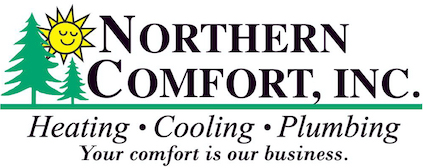It’s always nice when we manage to save money on our utility bills, but you should know there’s a way to do it when you aren’t even home.
It starts with your thermostat. By making the most out of your thermostat, you can structure its daily schedule around your personal preferences. That means you can have different temperature settings for when you’re home, away or even when you’re sleeping.
By trying a few of these schedules, you have more time to enjoy pleasant temperatures while also keeping more of your money. Check out our guide on how your thermostat can save you money in the summer:
While at Home
When you’re home, you want a nice range of pleasant temperatures. That’s why it’s best to set your thermostat lower in the summer while inside to appreciate the cool air.
But in terms of energy efficiency, the best range for when you’re in your home during the summer is usually between 78 and 80 degrees Fahrenheit. By adjusting things a few degrees, you’ll keep cool while still lowering your monthly energy bill.
While Away
When setting the temperature for when you are out of the house in summer, the majority of homeowners will set the thermostat higher than you would if you were in the house.
For some homes, you can set the thermostat to higher temperatures like 88 degrees while no one is home before you adjust it back to the sweet spot of 78-80 degrees when you or a family member return. This way, your air conditioning won’t have to work constantly to keep an empty house cool.
While Sleeping
When it comes to sleeping in the summer, you want your thermostat set at a comfortable temperature. A good rule of thumb is between 68-72 degrees Fahrenheit. This will keep you from getting too hot or too cold when you are trying to get some rest.
Other Strategies for Lowering Energy Use:
- Put in a smart thermostat: Switching to a smart thermostat in the summer is an excellent way to reduce energy costs by automatically adjusting to your lifestyle and home environment. They can lower the temperature while you are home or sleeping, before allowing it to get warmer when no one is home. With reliable brands like the Lennox iComfort, you can adjust the temperature remotely through your smartphone, tablet or laptop. Requesting smart thermostat installation in your Mankato area home is an effortless way to set the correct temperature even when you aren’t home.
- Replace current equipment with a newer HVAC system: A new HVAC system is another great option for long-term energy savings. If a system boasts high energy efficiency, lower utility bills won’t be far behind since it requires less energy to reach your preferred temperatures. Air conditioning installation in Mankato area is a great way to beat the heat in the summer.
- Stay on top of routine AC maintenance: Whether or not you keep up with regular air conditioning maintenance in Mankato area can have a serious effect on your total monthly energy use. By regularly cleaning the coils, checking for damage and keeping vents clear of dust and debris, this can help your HVAC system perform better during day-to-day use.. More efficient operation reduces strain on important or delicate components and lowers operational costs, lowering total energy use and eventually the total monthly bill.
- Clean or replace the air filter on a regular basis: Regularly changing the air filters in your HVAC system saves money by improving airflow. When filters are clogged with dirt and debris, your air conditioner will have to work harder, and the strain can reduce the system’s life span and result in breakdowns.
- Check your attic insulation: Insulation is a crucial component for any energy-efficient home, keeping the hot air outside and the cool air inside over the summer. The North American Insulation Manufacturers Association (NAIMA) offers an official recommendation stating homeowners in souther states should install at least 13-14 inches of insulation, while colder climates do better with 16-18 inches.
- Check your ductwork: Leaky ductwork can raise your energy bills much more than 20 percent, plus it can also lead to problems with your water heater, clothes dryer and other appliances throughout your home. Checking your ductwork for leaks and sealing them can help with both these issues.
- Seal all other leaky spots in your home: Sealing up other leaks in your home with caulk, foam sealant or weather-stripping can help keep it cooler on hot summer days. Don’t forget to check for any gaps around windows, doors and even outdoor fixtures. Taking the time to seal up any leaks now can help you save a lot in the long term.


